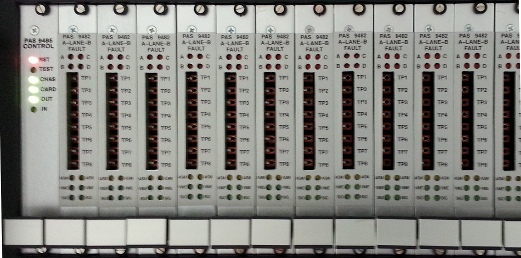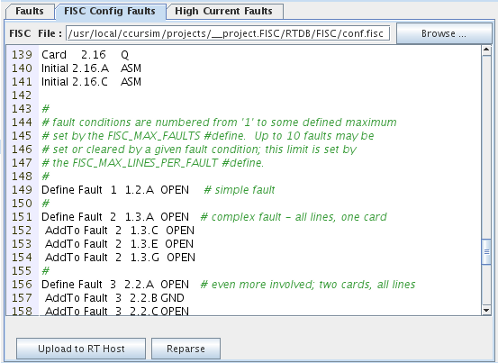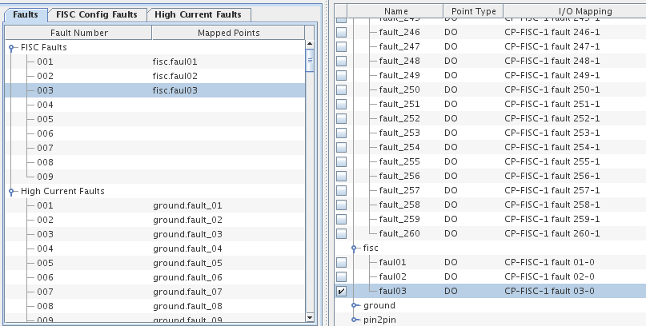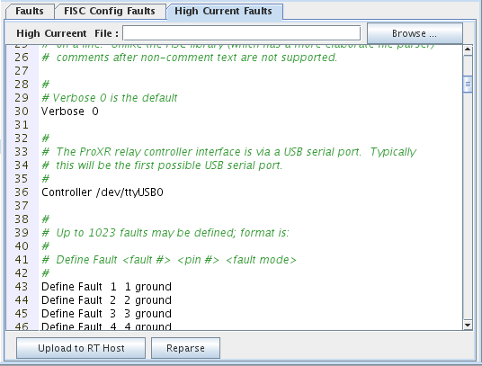|
The High Current (HC) FISC chassis and fault configuration is defined in an ASCII file which is stored in the associated RTDB directory.
The name of the file is FISCConfigHC. This configuration file and the associated faults defined by it are completely independent from the regular
FISC configuration. SimWB
provides access at run time to the faults defined in the configuration file by mapping Digital output RTDB items to
specific fault numbers defined in this file.
The configuration can be edited locally via the SimWB GUI configuration tool and uploaded to the SimWB real-time host. The file is
uploaded to the directory corresponding to the RTDB being edited.
The configuration file is read by the FISC I/O task upon initialization of a test. The FISC I/O task then calls the FISC API
to initialize to FISC chassis.
Buttons
Configuration File (Browse)
Specify a local HC FISC configuration and load it in the editor in the FISC Config tab.
Upload to RT Host
The file in the editor is uploaded to the RT host under the RTDB directory. The file
is always named FISCConfigHC.
Reparse
Reparse the file in the editor to find the Define fault # keyword. The fault
numbers found in the file will be used to populate the mappable faults in the Fault Mapping tab.
|





